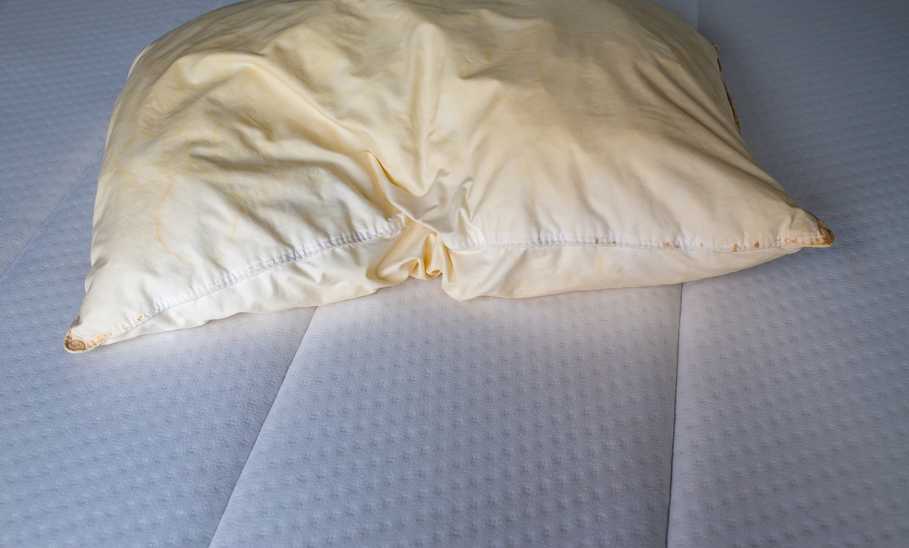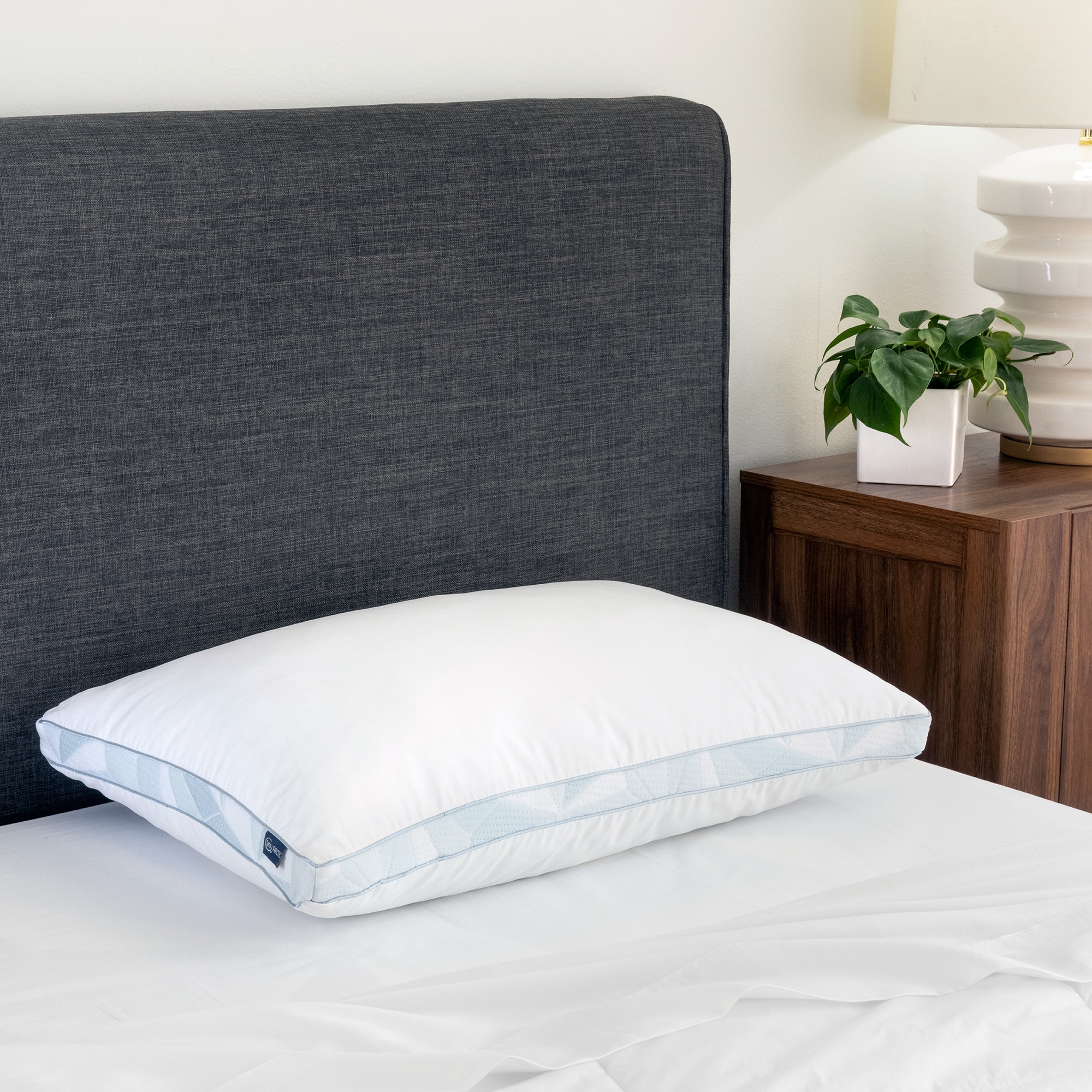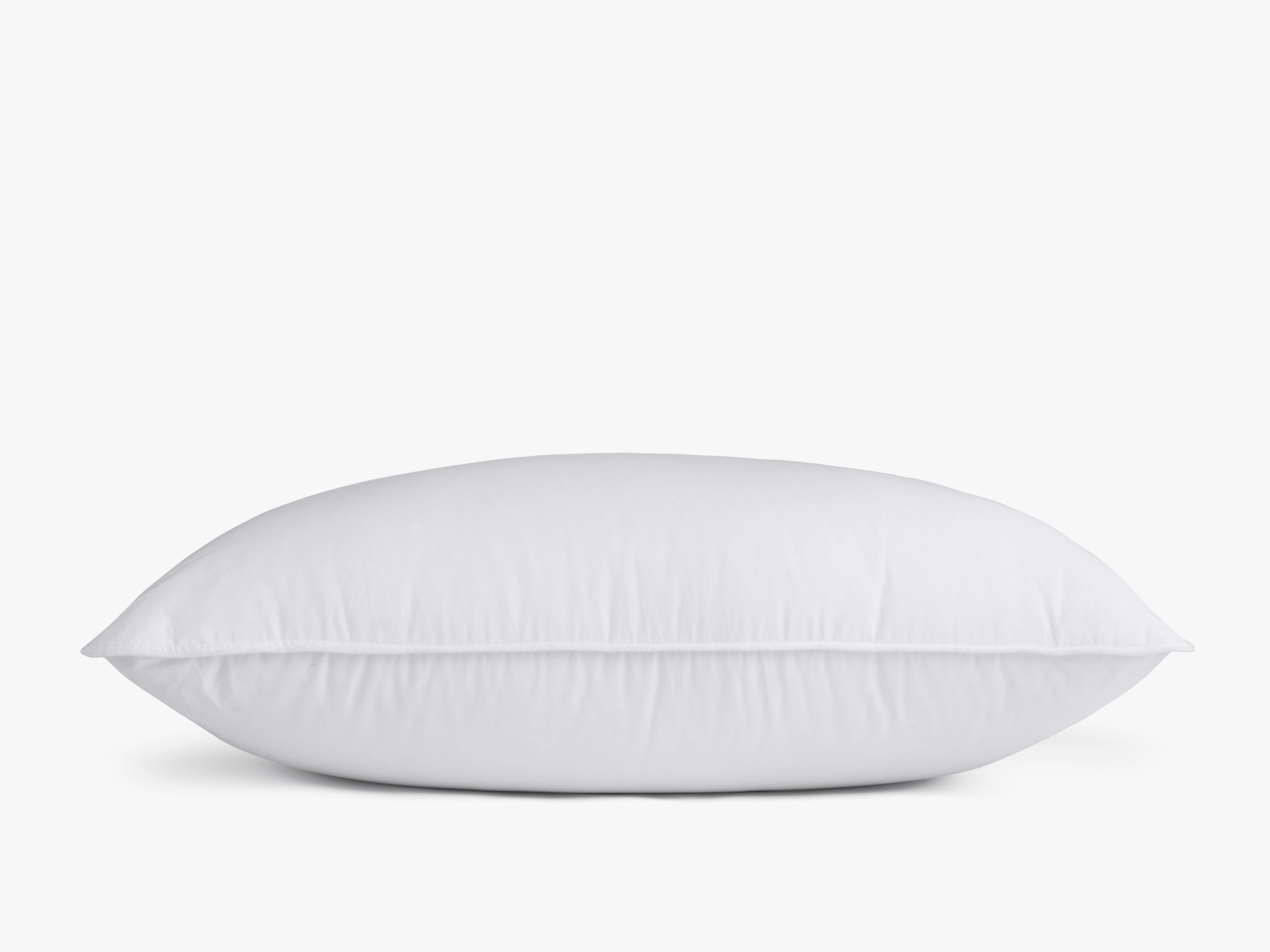Why Do Pillows Turn Yellow? We Have the Answers (and a Solution)

Our evaluations and opinions are not influenced by our advertising relationships, but we may earn a commission from our partners’ links. This content is created by TIME Stamped, under TIME’s direction and produced in accordance with TIME’s editorial guidelines and overseen by TIME’s editorial staff. Learn more about it.
Even when you diligently use a pillowcase, you may notice that the pillow inside eventually turns yellow. This discoloration is a tell-tale sign of age. By the time your pillow has turned yellow, it’s fairly old—bedding experts recommend purchasing a new pillow every 2.8 years. But if your pillow is younger and still has its shape, try cleaning it before tossing it. We’ll cover the reasons behind this transformation, along with the proper laundry methods to keep your pillow looking new longer.
The quick answer: Moisture, in all forms.
When your body sweats at night, it can turn pillows and sheets yellow over time.
If your bedtime routine involves putting creams and serums on your face, some residue from these lotions and potions may rub off your pillows. This can build up over time, causing stains.
Some sleepers drool in their sleep, and when that happens, your pillow may end up damp or wet from the saliva—which can cause sheets to turn yellow when coupled with other factors.
Your skin and hair oils can cause yellow stains over time due to overactive sebaceous glands, which results in an overproduction of body and hair oils that are passed onto your pillow and can cause it to turn yellow over time.
Going to bed with wet hair regularly, and not using a towel to cover your pillow, contributes to yellow stains over time. Wrapping your hair in a towel if you sleep on it wet can help stop water stains and saturation.

Yes. Using pillows with yellow spots for sleeping is safe, but why would you want to? Yellow pillows are often a sign of age. If your pillow is old, it may be misshapen. If it smells funny or feels damp (think mildew), you probably should replace it. But if it smells fine and is comfortable, it should be safe to sleep on until you can get a replacement. If your pillow has turned completely yellow, or has developed some brown stains, it is probably time for a replacement.
Using pillow protectors (fabric that zips over the pillow) and pillowcases will help protect your pillow from turning yellow.
Spot cleaning when a spill happens or you notice a stain can also prevent yellowing. Depending on the type of pillow, you should wash it anywhere between two and six months.
Laundry experts have many suggestions about how to remove these stains. “Start by pre-treating the yellow stains on your pillowcases and sheets," says Angela Brown, host of the Ask a House Cleaner podcast.
She says to consider using a stain remover directly on the stained areas. "Gently rub the solution into the fabric and let it sit a few minutes to allow the stain remover to soak in,” suggests Brown. “Next, launder your linens in lukewarm water on a gentle cycle.”
If stain removers seem too harsh for your pillows, you can try soaking yellow pillows in baking soda, white vinegar, and a mild detergent. Overall, with any bedding, it’s important to follow care instructions to avoid damage to specialty fabrics and materials. “If you need clarification on a particular stain, consult a professional dry cleaner for advice,” Brown adds.
Experts at One Price Cleaners report it’s important to keep pillows clean to protect them from dust mites, dirt, bacteria, and even fungus. When your pillow is dirty, it can cause acne, rashes, and even allergy flairs if it is full of dust and dirt.
Not always. If the stains are minimal after washing the pillow and it still holds its shape, it may be ok to keep it. If it smells musty or damp or the stains cannot be removed, it may be time to purchase a new one.
It depends on how long the stains have been set. You can try to bleach your pillow or use a homemade solution of vinegar, baking soda, and mild detergent. Some yellow stains, however, just can’t be removed.
The Better Sleep Council recommends you replace your pillows every 2.8 years.
Check the care label on your pillow for individual recommendations. The Better Sleep Council recommends that pillows stuffed with feathers and down should be washed every three to six months, while memory foam needs to be washed every two months.

The information presented here is created by TIME Stamped and overseen by TIME editorial staff. To learn more, see our About Us page.



